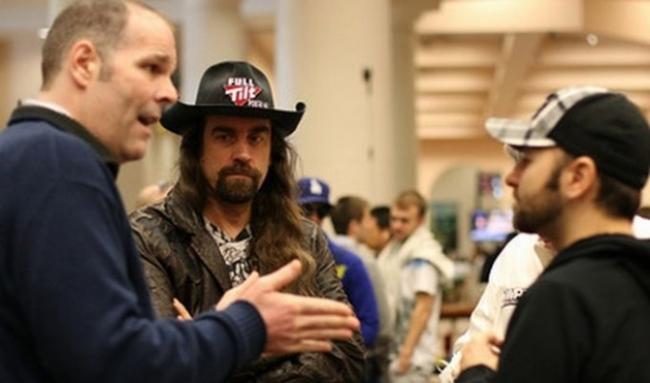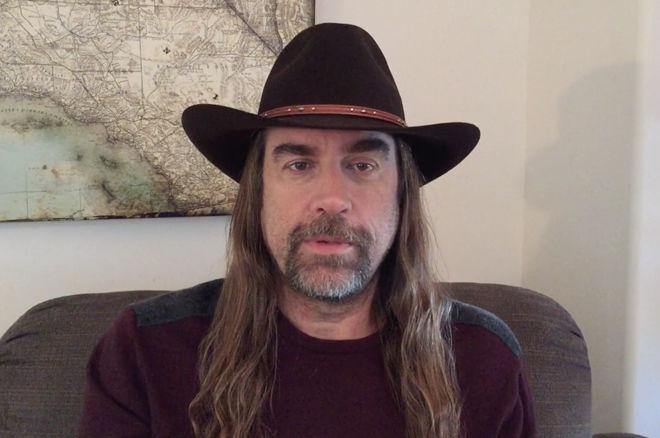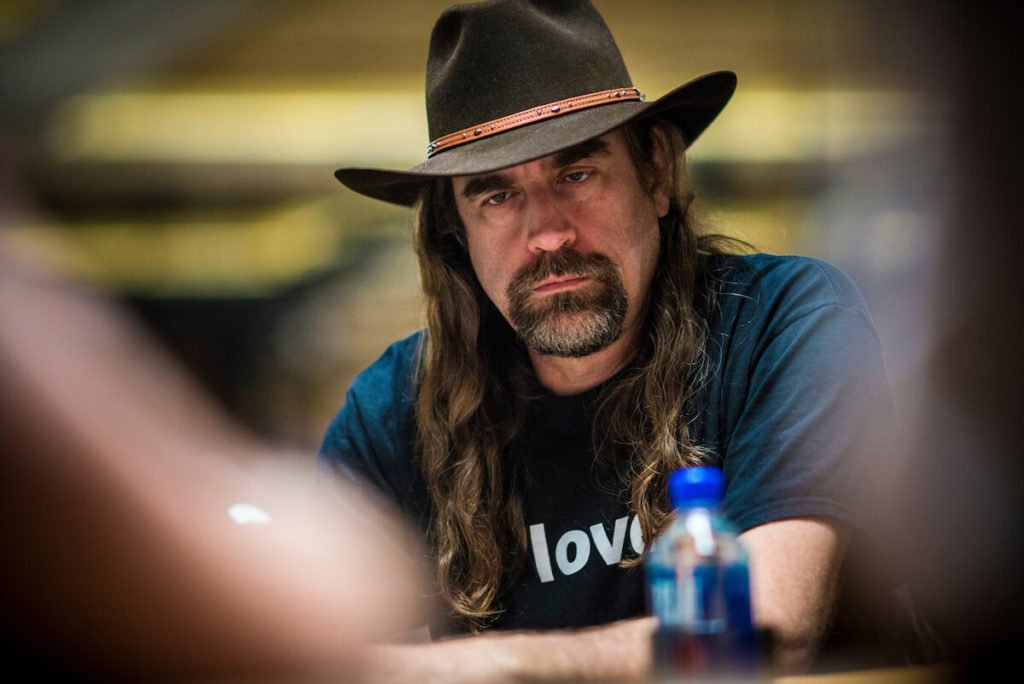Chris Ferguson Full Tilt
Former Full Tilt Poker owner Chris Ferguson has reached a settlement in his civil case stemming from Black Friday with the federal government, his attorney Tweeted Tuesday.
Lederer and Ferguson were part of a civil lawsuit filed by the U.S. Justice Department in September 2011 alleging Full Tilt Poker was a Ponzi scheme. Federal prosecutors claimed Lederer. Ferguson had a 20% stake in Full Tilt, according to the Wall Street Journal. When Full Tilt was shut down on Black Friday, it owned players in the United States over $150 million dollars, and roughly another $150 million more to players worldwide. Reports state that Full Tilt had paid its owners (including Ferguson) and associates $444 million.
Chris Ferguson Offers Short Apology After Seven Years of Silence May 23, 2018 Frank Op de Woerd 106 Seven years ago, April 2011, Black Friday shook the poker world with poker's big three. Until this year, Ferguson had not been seen at a live poker event since the infamous 'Black Friday,' on April 15, 2011, when the U.S. Department of Justice shut down Full Tilt and other offshore. Chris Ferguson Net Worth. Something that cannot go unmentioned in a page dedicated to Chris Ferguson is the Full Tilt scandal. Due to his skill as both a computer guru and a poker player, Ferguson is extremely gifted at developing gaming software. He helped to create the software for what became one of the largest online poker platforms.
He had been in hot water for about the past 18 months.
Chris Ferguson reaches #iPoker civil forfeiture settlement with #SDNY and anticipates court approval soon. fb.me/A9yuKh4c
— Ian J. Imrich, Esq.(@ijiLaw) February 19, 2013
Ferguson will hand over an undisclosed amount from an account at Citibank, as well as an additional $2.35 million. The government had been seeking $42 million from Ferguson.
According to court papers, he “contends that he was unaware of any wrongful activity at Full Tilt or that the company had become unable to satisfy its player account liabilities.”

Ferguson, a five-time World Series of Poker bracelet winner and the 2000 main event champion, didn’t admit to any wrongdoing in the settlement.
He has never talked publicly about the case or the allegations.
He was first brought into the mix of the Black Friday scandal in September of 2011, when the Department of Justice called the company a Ponzi scheme.
After the deal, Ray Bitar remains as the only other former owner facing charges. Howard Lederer settled in December of last year, while Rafe Furst reached a deal in November.
While Lederer, Ferguson and Furst are done with their respective civil cases, former American poker players are still waiting for compensation from the government.

Other components of the Black Friday case are still unfolding within the legal system.
While my friend and colleague Dan Katz reported earlier this week on the closure of Full Tilt Poker (occurring today), it was big enough that I felt that I needed to add onto the remembrances of the site. While many may dwell on what was the end – and the nearly nomadic existence it has had over the past decade – there was a time when the phrase “Full Tilt Poker” was one of joy. Let us take a walk down memory lane, shall we?
Do You Remember the U. S. Poker Team?
Way back in 2004, many in the U. S. were preparing for the Summer Olympics in Athens, Greece, and I was but a young(er) poker journalist. Now what do the Summer Olympics and poker have in common? One of the very first promotions for Full Tilt Poker was that they were advocating for poker to be included in the Olympics, and they took a masterful tack to build their audience.
In sending out an email to announce their “initiative” to have poker honored as an official sport at the 2004 Olympics, a company called Full Tilt Poker offered “U. S. Poker Team” hats and shirts to people who simply went to a website and gave up their email address. This masterful stroke allowed Full Tilt Poker to build an audience of poker players in general and, with the explosion of online poker, a ready database of potential players. When they launched in the summer of 2004, success was a foregone conclusion.
Many might have found the website cartoonish with its avatars, but it was just as good a poker site as the two dominant forces in the market at the time, PartyPoker and PokerStars. There was a tremendous number of games and variants offered and it offered tournaments aplenty. It was the second leg of their plan that was another masterful stroke.

As it turned out, some of the biggest names in the game had ownership in the site. Such popular pros as Howard Lederer, Chris Ferguson, Phil Ivey, Jennifer Harman and Phil Gordon (among others) made up “Team Full Tilt.” These top professionals were the stable for the site (part owners, as it came to be known) and they actively took on all comers on the virtual felt. This was unheard of! PROFESSIONAL poker players actually playing against those who wanted to be them…what a deal!
The first two years showed a slow but steady growth. They had an outstanding “relaxation area” for players during the 2005 World Series of Poker, adding to their legend. There was a memorable, ornate display in the “relaxation area” where the WSOP bracelets that members of “Team Full Tilt” had won over the years that was truly impressive. But the true growth would not come until 2006…
The “Golden Years” of Full Tilt Poker

In 2006, the Unlawful Internet Gambling Enforcement Act (UIGEA) was signed into law and Full Tilt Poker had a decision to make. Would they follow the course of publicly traded companies like 888Poker and PartyPoker and leave the U. S. market, or would they continue to service the country against the mandates of the UIGEA? Full Tilt, like the private company PokerStars, decided to stay in the country and reaped millions for the decision.
Over the course of the next five years, Full Tilt Poker went on to become the second largest online poker room behind only PokerStars. They continued to innovate in the online poker industry, bringing out more diverse poker variants that some poker rooms would not even touch (this allowed them to do mixed game tournaments). They also became the home of “high stakes” play, as Ivey and a plethora of young hotshots – including a then-unknown ‘Isildur1’ (Viktor Blom) – who would play at nosebleed levels (eight of the ten largest online poker pots in history took place at Full Tilt).
There would also be downsides for Full Tilt. Poker professional Clonie Gowen accused the ownership of wrongful termination, claiming that they offered her a 1% share in the company when she came on (Full Tilt denied this…then). They also had several lawsuits filed against them by others who had been a part of the Full Tilt family – at one point, they literally had over 100 “Friends of Full Tilt” that benefitted from the operations (and we count getting their rake back as a benefit).

The end would come quickly and suddenly, however…
“Black Friday” Destroys the Company
In April 2011, the U. S. Department of Justice dropped the hammer on the major online poker operations in the country – PokerStars, the CEREUS Network rooms Absolute Poker and UB.com, and Full Tilt Poker. While PokerStars was able to quickly negotiate a method to repay its U. S. players all monies they had on the site, the others – Full Tilt included – had not segmented their finances between being able to pay players and pay business expenses – in essence, they were using player money to fund operations, including paying their significant personnel. It may be arguable, but Full Tilt Poker was one of the worst abusers of this fact.
In court filings over the next six months, it became known that Full Tilt Poker paid the members of “Team Full Tilt” massive monthly payments from the operational funds. This included three members of its management: Lederer, Ferguson and Roy Bitar (Bitar was the only one of these three to face criminal charges). These payments left Full Tilt with no money on hand to pay players in the U. S. once the hammer was dropped by the DoJ.
Full Tilt Poker really died then, in September 2011, when they lost their operational license from the Isle of Man. Sure, PokerStars bought them in 2012 and relaunched the site, but it was but a shell of its former self. Full Tilt Poker limped along for a few more years before basically becoming a “skin” of PokerStars and not an independent operation in 2016. It has essentially existed in name only for the past five years.
Full Tilt Poker Chris Ferguson
Full Tilt Poker did a lot right in its time in the online poker industry. They had a “player first” feel to them that didn’t exist in another online site, as evidenced by their “Learn, Chat and Play with the Pros” tagline. But Full Tilt Poker was eventually ruined by those very pros that were responsible for its success. It is arguable that they would still be in existence today…IF they had been responsibly managed and fiscally responsible.
Chris Ferguson Twitter
Requiescat in Pace, Full Tilt Poker…it was a good run.